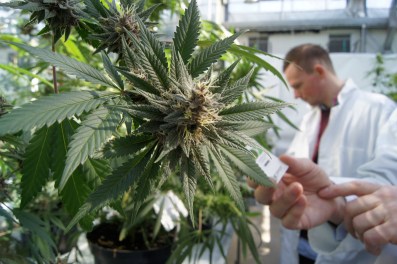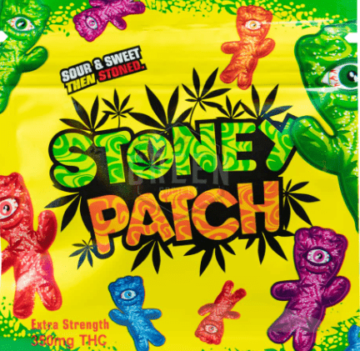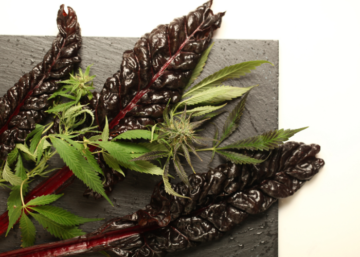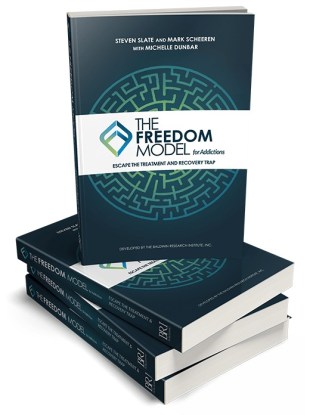Is “Cannabis Use Disorder” (CUD) causing all kinds of perioperative problems, or is it the effects of smoking? A new paper published in the journal JAMA Surgery took a look.
Here was their question.
“Is cannabis use disorder associated with an increased risk of perioperative complications and in-hospital mortality after major elective inpatient surgery?”
Notice the assumed reality that CUD exists. They refer to the ICD-10 definition. But we’re not here to criticize the results of this paper.
It could very well be that long-term, randomized control trials prove a physiological clash between surgery and cannabis.
Instead, it’s the paper’s methodology that leaves us wanting. As well as the media response. One headline from CNN reads: “Overuse of marijuana linked to surgery complications and death, study says.”
Does the study say this? And if it does, is that a valid assessment? Here are ten things to consider about the study’s methodology.
Ask yourself, is it CUD causing these complications or the effects of smoking?
CUD or Effects of Smoking? #10 Data Source
This study used retrospective data from the National Inpatient Sample (NIS). Derived from billing inpatient care in the US, we question this information’s accuracy (or completeness).
Additionally, the study’s authors do not have control over this data collection. There is critical information missing that forms a bias. Namely, is it CUD or the effects of smoking?
#9 Selection Bias
Granted, the study’s authors focused on major elective surgeries in adults between 18 and 65. But the reliance on the NIS database introduces selection bias. It only includes hospitalizations and excludes outpatient surgery.
There’s also no mention of delivery methods. Blocked arteries, stroke, kidney damage, blood clots, infection, and even in-hospital death were associated with “cannabis use disorder.”
CUD or Effects of Smoking? #8 Covariate Selection
Covariates are variables that affect a response variable but are not of interest in the study. The selection of covariates in this study is based on previous literature. Did the authors omit important confounding variables? Whether intentional or not?
#7 Propensity Score Matching
Researchers use propensity score matching to reduce bias. But this technique assumes you’re aware of all relevant confounders. That is, a variable that influences dependent and independent variables and causes a false association.
If an unmeasured confounding factor exists, this propensity score matching process won’t address it. Remember the study’s basic premise: is CUD causing perioperative complications?
Is it CUD or the effects of smoking?
CUD or Effects of Smoking? #6 Selection Bias (Again)
This study matches “CUD” patients and the “unexposed” group in a 1:1 ratio. However, the authors excluded some unmatched patients from the unexposed group from the analysis. Why?
This clearly introduces selection bias and affects the overall results. Later, the study authors say they employed a “sensitivity analysis,” but they admit this results in a loss of transparency.
In other words, this study compared the matched cohort groups side-by-side. But they excluded patients that didn’t fit their bias.
Perhaps you’re seeing the validity in asking: is it CUD or the effects of smoking?
#5 Meaningless Statistical Analysis
This study uses several statistical models, including logistic regression and negative binomial regression. Each with its assumptions and limitations.
But what about details on missing data? What about the unmatched patients from the unexposed group? Why ignore variables of interest?
CUD or Effects of Smoking? #4 Other Limits
Is it CUD or the effects of smoking? The data doesn’t say so. The authors assume it’s the former. But even if it were true, it’d only be between January 2016 and December 2019.
This study has established nothing universally true and scientific.
#3 More Confounding Factors
Unmeasured and unknown factors make the observed associations of this study practically useless. Again, we’re not saying there isn’t a clash between cannabis smoking and surgery. But this isn’t the study to confirm it.
The most egregious example is the source data concerning the “CUD” patients. Nowhere is it addressed how severe they felt their “addiction” was, what type of strains they used, how they consumed it, nor how often they used it.
“CUD” defined by the ICD-10 is very open-ended. It could mean once a day before bed.
Lacking information on the route of cannabis administration makes our question entirely appropriate. Is it CUD or the effects of smoking causing perioperative complications?
CUD or Effects of Smoking? #2 More Information
Even the study’s authors say more research is needed. And indeed, a comprehensive study that included data from a controlled source would go a long way. As would include additional control groups, including cannabis consumers who don’t smoke.
#1 Narrative Bias
Is it reasonable to conclude that cannabis use disorder is associated with a 1.16% increase in perioperative morbidity and mortality after major, elective, inpatient, and non-cardiac surgery?
Based on the narrative presented in the study, yes. But switch out CUD for “effects of cannabis smoking,” and you get the same results. Perhaps a less biased one.
Smoking tobacco significantly increases the risk of complications after surgery. No one is disputing that. And while cannabis lacks a lot of the harsh chemicals commercial-brand cigarettes have, at the end of the day, you’re still inhaling burnt plant matter.
The study’s authors didn’t delve into the specific details of cannabis administration or dosage. They simply identified patients using ICD-10 codes and made some generalizations.
This study cannot definitively conclude whether the 1.16% increase in perioperative complications is due to cannabis or cannabis smoke.
CUD or the effects of smoking? Without a more rigorous analysis, no one can say for sure.
- SEO Powered Content & PR Distribution. Get Amplified Today.
- PlatoData.Network Vertical Generative Ai. Empower Yourself. Access Here.
- PlatoAiStream. Web3 Intelligence. Knowledge Amplified. Access Here.
- PlatoESG. Automotive / EVs, Carbon, CleanTech, Energy, Environment, Solar, Waste Management. Access Here.
- BlockOffsets. Modernizing Environmental Offset Ownership. Access Here.
- Source: https://cannabislifenetwork.com/cud-or-effects-of-smoking-10-things-to-consider/
- :has
- :is
- :not
- 1
- 1:1 ratio
- 10
- 2016
- 2019
- 65
- a
- About
- accuracy
- Additional
- address
- administration
- admit
- adults
- affect
- affects
- After
- again
- All
- also
- an
- analysis
- and
- appropriate
- ARE
- AS
- assessment
- associated
- Association
- associations
- assume
- assumed
- assumes
- assumptions
- At
- authors
- aware
- based
- basic
- BE
- before
- between
- bias
- biased
- billing
- blocked
- blood
- but
- by
- CAN
- Canadian
- cannabis
- cannot
- care
- causes
- causing
- chemicals
- Clash
- clearly
- CNN
- Codes
- Cohort
- collection
- compared
- comprehensive
- concerning
- conclude
- Confirm
- Consider
- consumed
- Consumers
- control
- controlled
- could
- critical
- damage
- data
- Database
- day
- Death
- December
- defined
- definition
- delivery
- dependent
- Derived
- details
- DID
- disorder
- do
- does
- Doesn’t
- Dont
- dosage
- due
- each
- effects
- employed
- end
- entirely
- established
- Even
- example
- excluded
- exists
- factor
- factors
- false
- fit
- focused
- For
- Former
- forms
- from
- get
- Go
- Group
- Group’s
- Have
- headline
- here
- How
- However
- HTML
- HTTPS
- identified
- if
- important
- in
- include
- included
- includes
- Including
- Increase
- increased
- independent
- infection
- information
- Intentional
- interest
- into
- Introduces
- IT
- ITS
- January
- journal
- jpg
- kidney
- later
- less
- limitations
- linked
- literature
- Long
- long-term
- Look
- loss
- Lot
- made
- major
- make
- MAKES
- marijuana
- matched
- matching
- Matter
- max-width
- mean
- Media
- mention
- Methodology
- methods
- missing
- models
- more
- most
- namely
- NARRATIVE
- National
- needed
- negative
- New
- no
- nor
- nothing
- observed
- of
- often
- on
- once
- ONE
- only
- or
- Other
- our
- out
- over
- overall
- Paper
- patients
- perhaps
- plato
- Plato Data Intelligence
- PlatoData
- practically
- presented
- previous
- problems
- process
- Prove
- question
- Randomized
- ratio
- Reality
- reasonable
- reduce
- regression
- relevant
- reliance
- remember
- research
- response
- Results
- rigorous
- Risk
- Route
- same
- say
- saying
- says
- scientific
- score
- seeing
- selection
- several
- severe
- simply
- Smoke
- Smoking
- So
- some
- Source
- specific
- statistical
- Still
- Strains
- Study
- sure
- Surgery
- Switch
- ten
- that
- The
- The Source
- their
- There.
- These
- they
- things
- this
- to
- took
- Transparency
- trials
- true
- type
- unknown
- unmatched
- us
- use
- used
- uses
- using
- validity
- variables
- very
- wanting
- was
- Way..
- we
- WELL
- were
- What
- whether
- while
- WHO
- why
- with
- without
- words
- would
- yes
- you
- yourself
- zephyrnet















